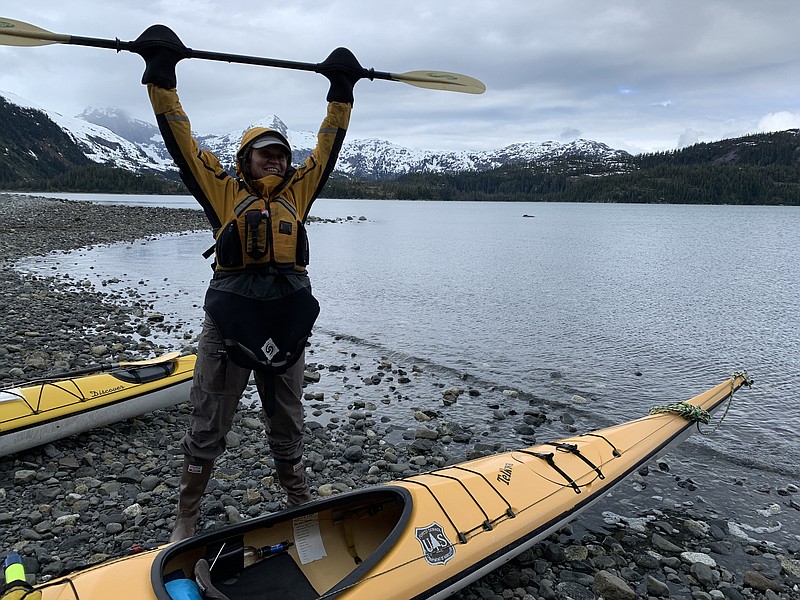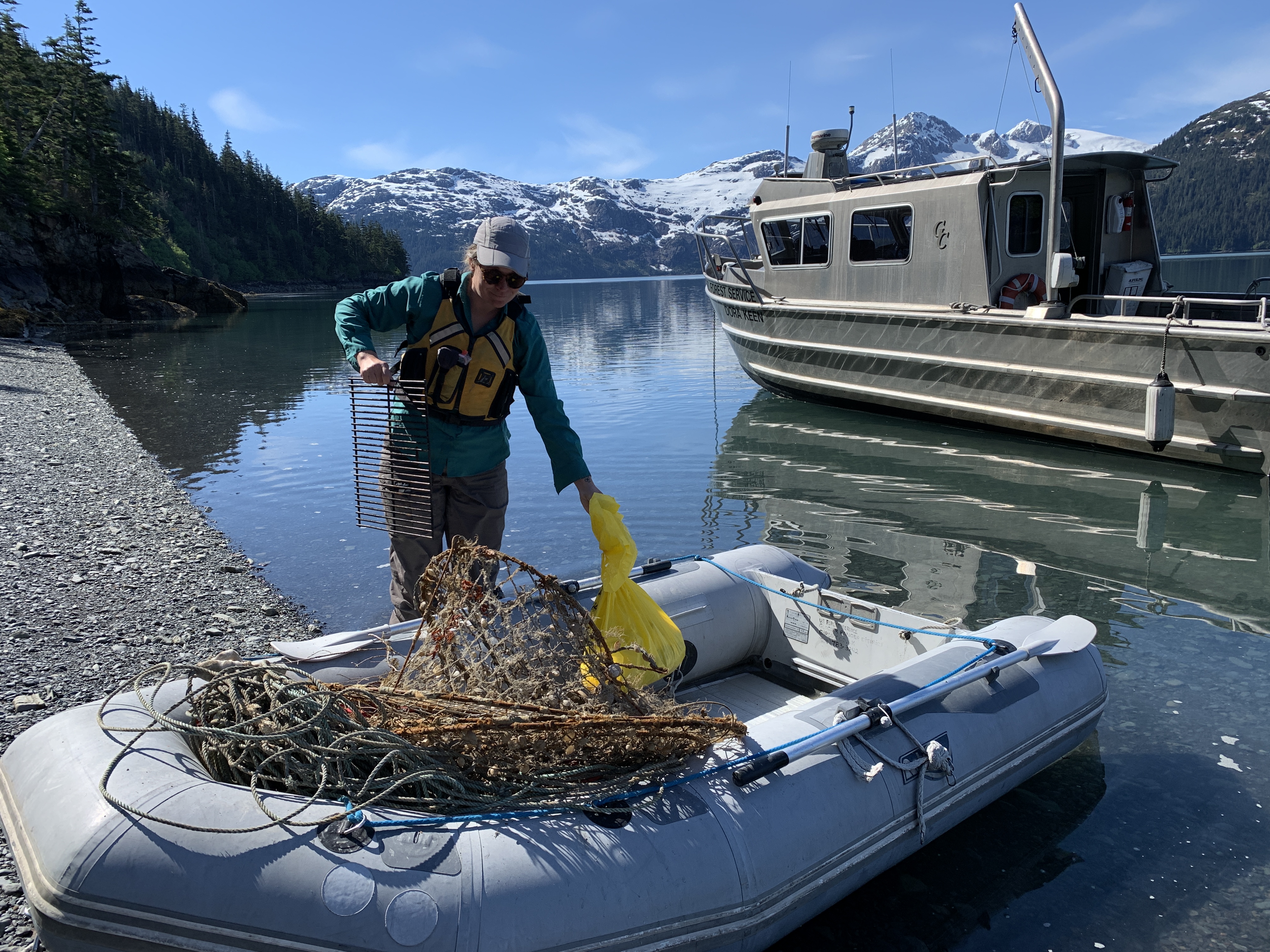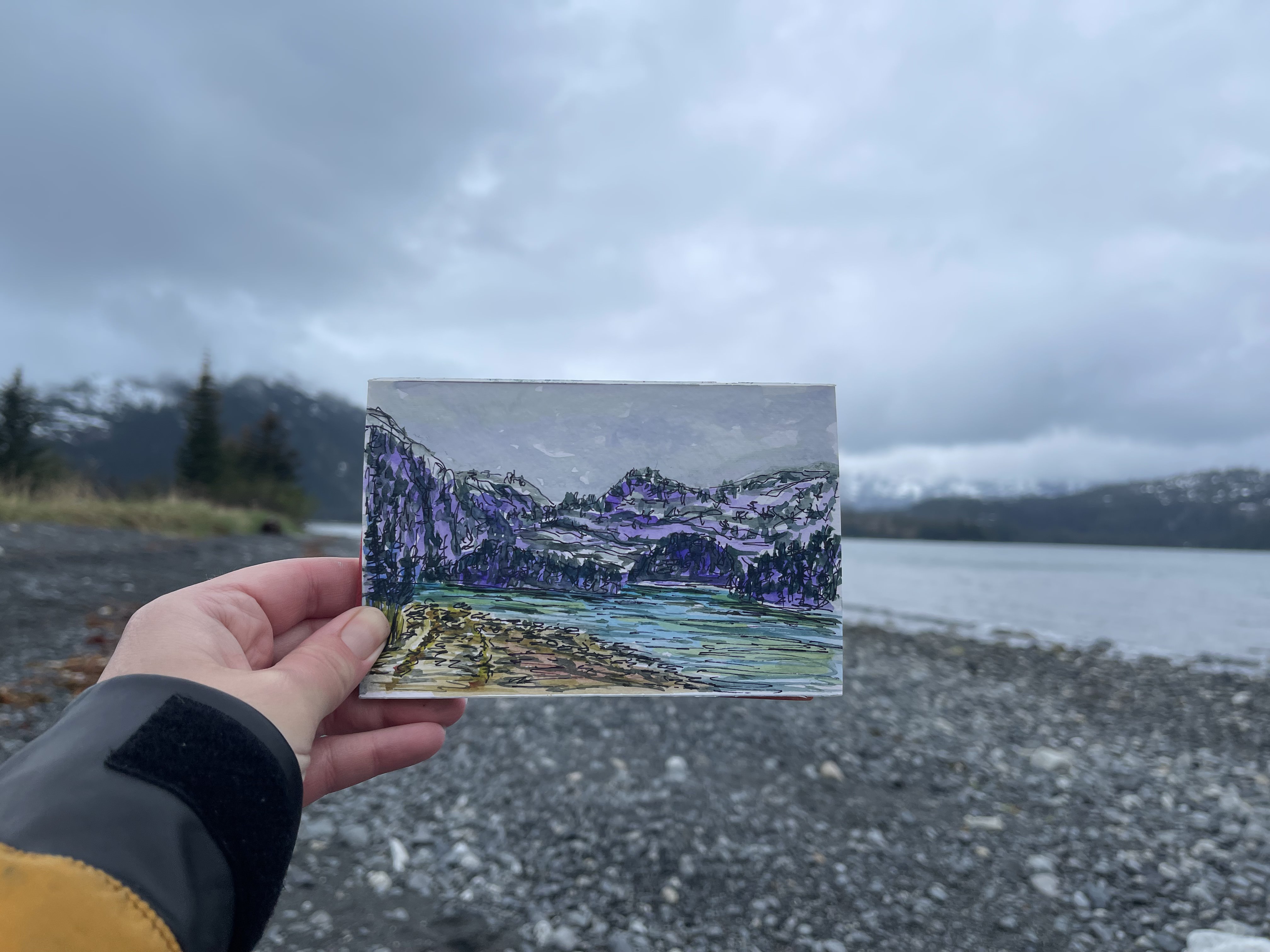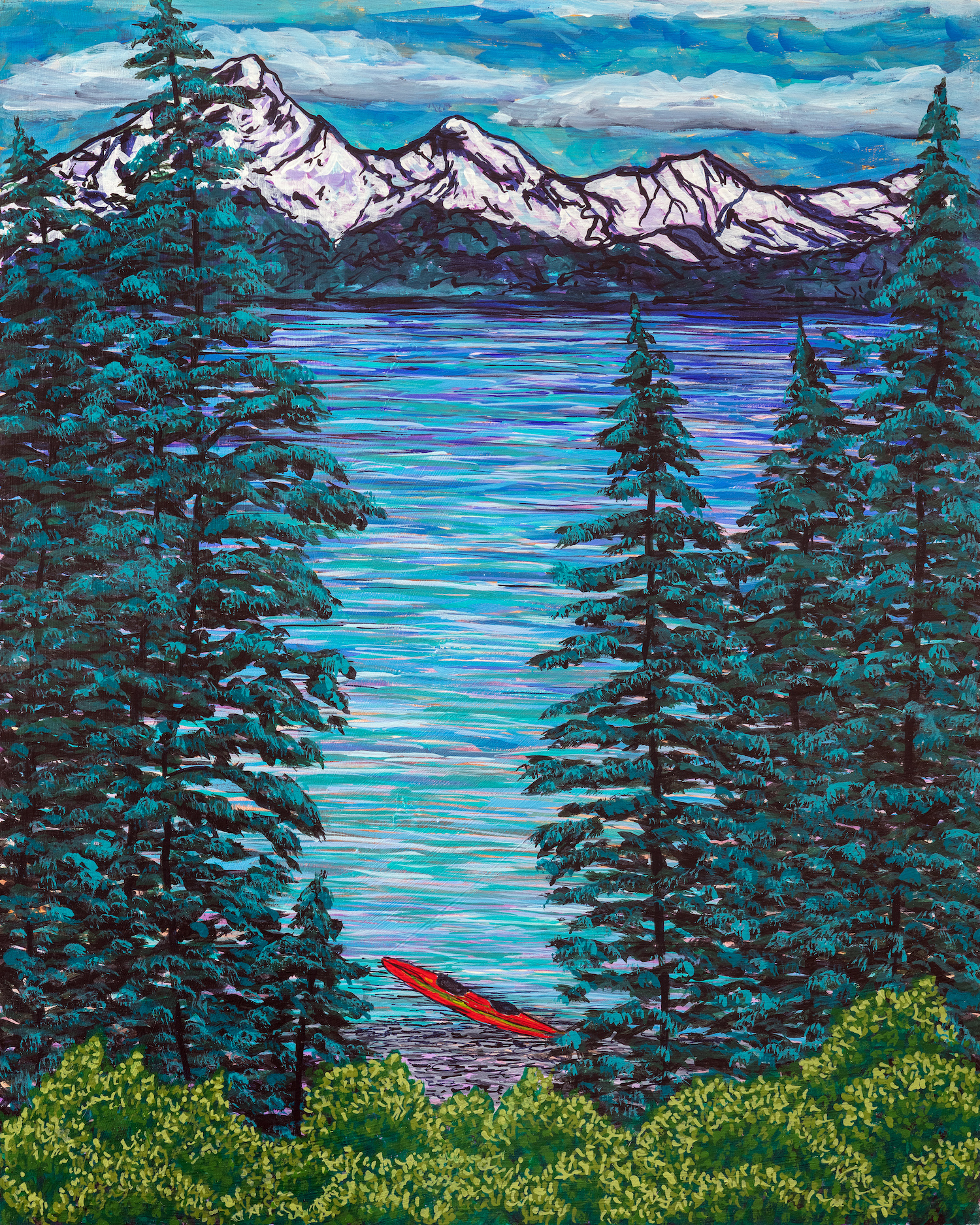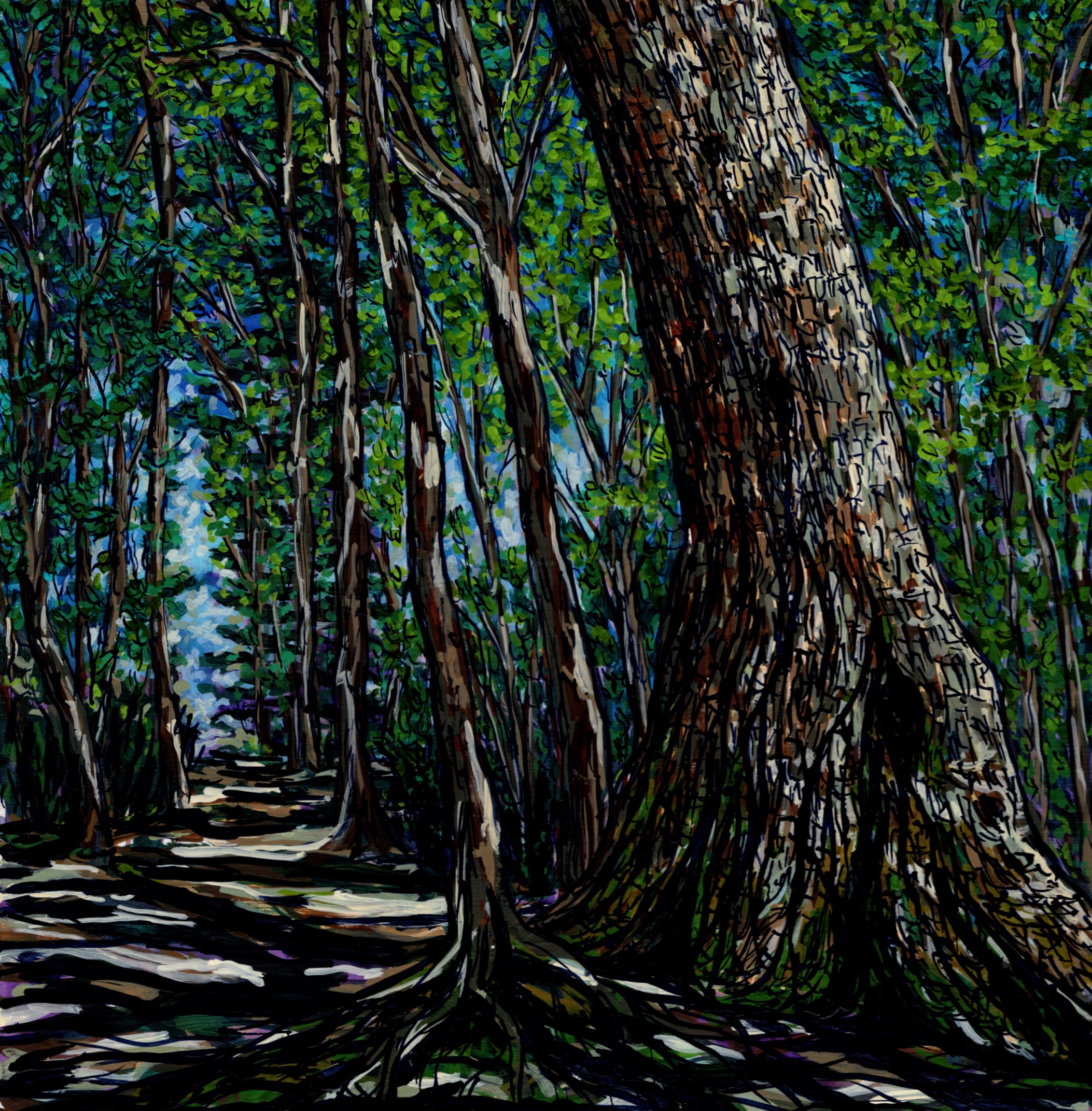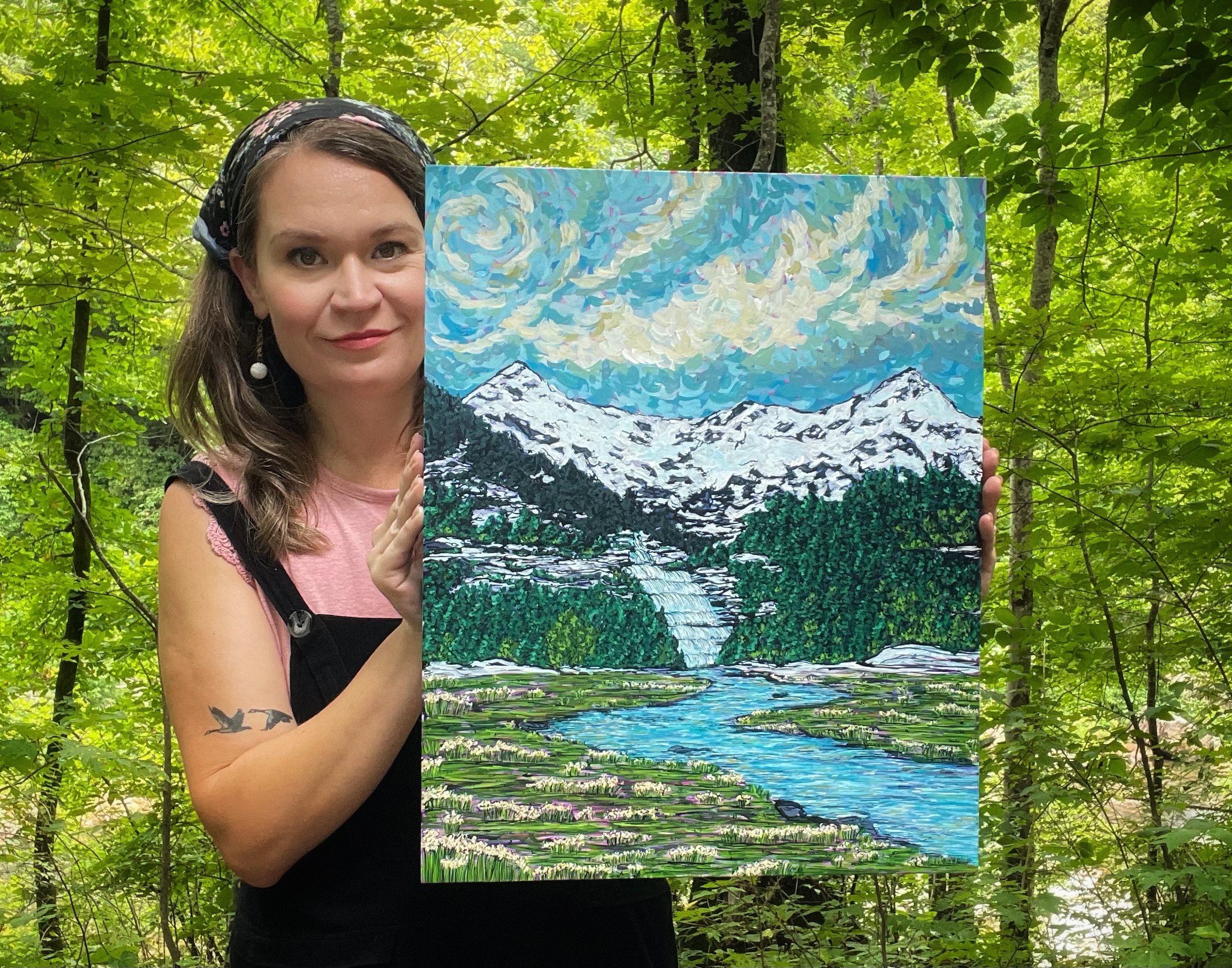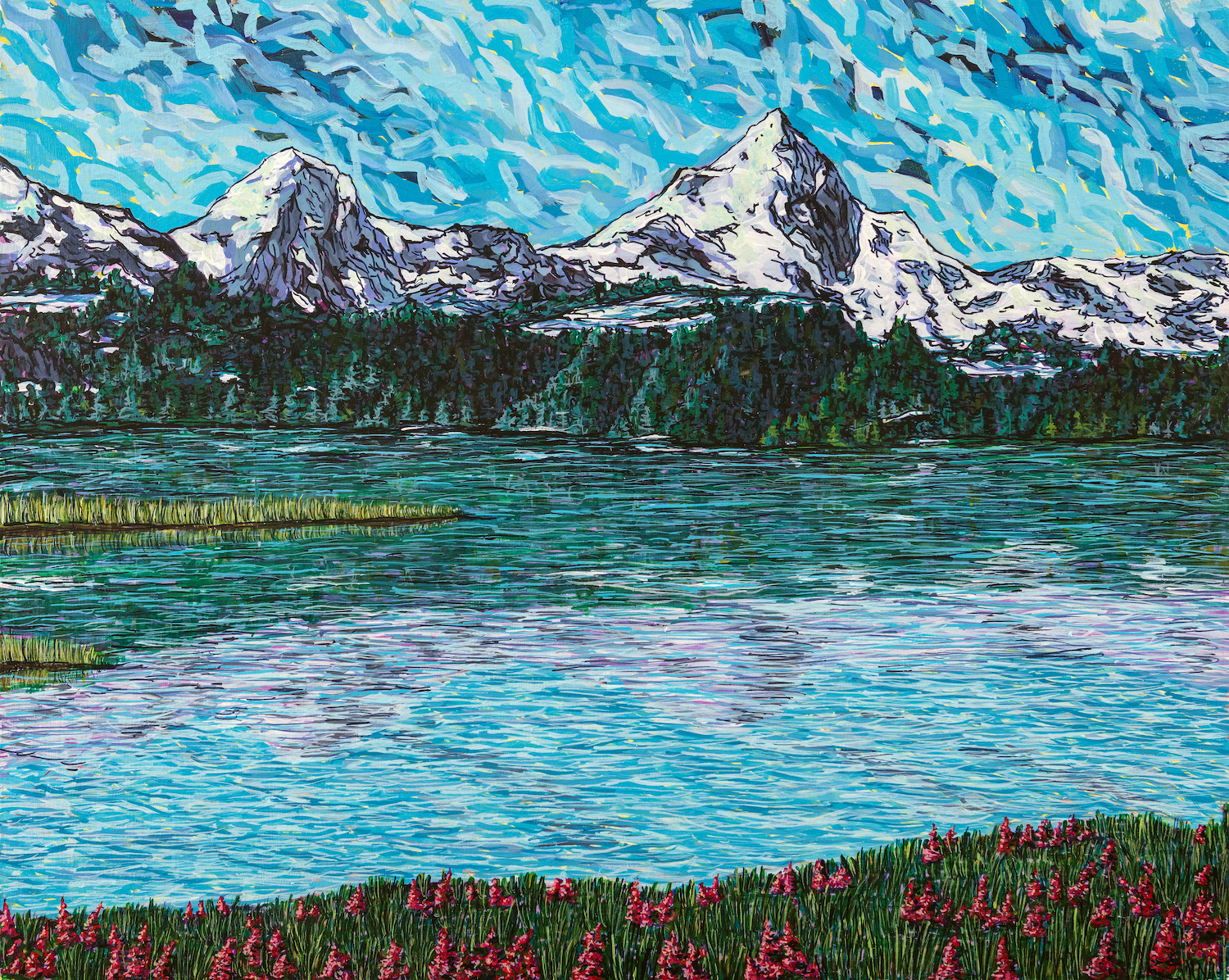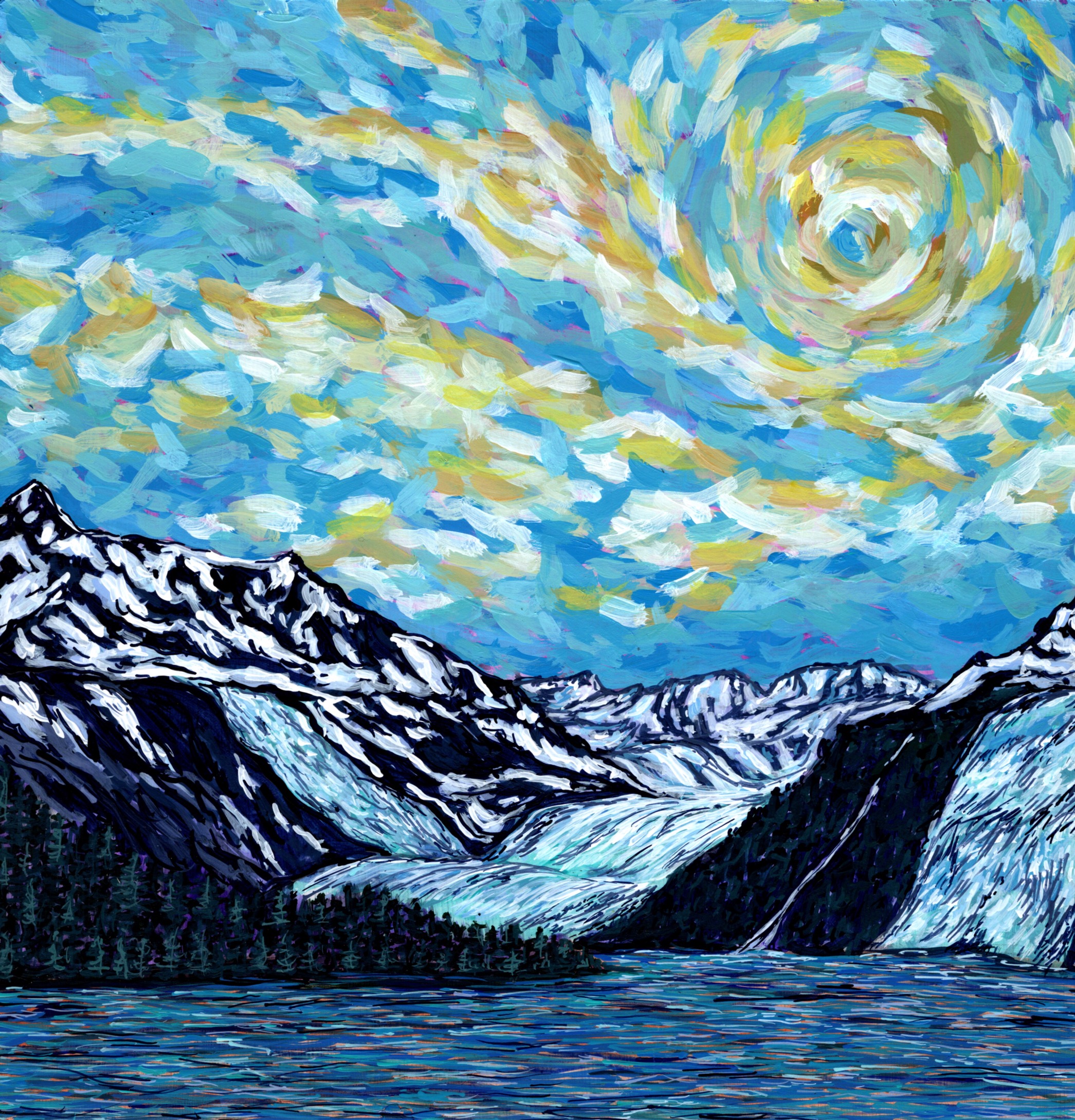Jaime Lynn Barks grew up in the mountains of Western North Carolina, 30 minutes from the nearest Walmart. She was raised by a single mother, who struggled with mental illness. And though Barks says she was well-loved as a child, her home life could be chaotic, so she spent a lot of time roaming the nearby woods, sketching pictures of trees and flowers.
"I've always found solace in isolation," she says.
Now, age 40 and a full-time artist in Chattanooga, Barks' work still focuses on landscape, depicting modern paintings of the places she's been and the trails she's hiked.
But then, "2020 shook something loose in me," she says.
She yearned to escape deeper into nature.
"I was ready to do the things I've always talked about doing."
First, she took up backpacking, and, in April, solo-hiked 35 miles of the Appalachian Trail, sketchpad in tow. Then, she began applying to artist-in-residency programs at parks across the country.
National Park residencies are programs that offer artists of all sorts a space to create. There are more than 50 in the U.S., from Acadia to Zion, with residencies ranging from 2-4 weeks and often offering free lodging deep in the wild.
But the program to which Barks was accepted was different.
Rather than stay in a quiet cabin alone with her art supplies, Barks would spend two weeks trekking Alaska's rugged backcountry, helping rangers research and monitor the Nellie Juan-College Fjord Wilderness Study Area.
In June 2021, she bought a plane ticket - the only expense of her "Voices in the Wilderness" residency, a partnership program between the U.S. Forest, Fish and Wildlife and National Park Service - and began her journey to Whittier, Alaska, outside of Anchorage. She took a 90-minute boat ride to the study area, encompassing two million acres of forest and ice surrounding Prince William Sound.
There were no roads, no structures, nor even any trails where she was going.
"Hiking just meant walking through the woods," says Barks, who saw black bear, moose and humpback whales throughout her trip. She kayaked icy waters and camped in sideways rain. Sleeping was difficult, she says - mostly because the sun never completely set.
During the days, she and the rangers cleaned debris from beaches and visited salmon fisherman camps. They did routine monitoring of Barry Arm, part of the fjord comprising several glaciers - now rapidly retreating as a result of climate change. In their wake, the glaciers leave steep, unstable slopes, and if a landslide should occur, she learned, it would create a tsunami capable of leveling Whittier and other nearby port towns.
"You could hear the ice breaking and see the calving process," Barks says.
The goal of "Voices in the Wilderness" is to connect artists to the stewardship that supports public lands with the hope they'll communicate the significance of those places through their work.
Along the way, Barks sketched when she could, at dinner or while the rangers checked fishermen's permits. Her paintings are finished in studio, acrylic on wood. But they all begin in the field as quick watercolor or ink sketches, which help her remember the mood of the landscape.
"I only paint places that I've been," Barks says. "I want to capture what it feels like to be there at that moment in time."
But the wildness of Alaska posed unique challenges. The sky - like the landscape - is rapidly changing, she says, going from clear to overcast in the blink of an eye. And its ephemeral nature can be seen in her finished pieces: lyrical skies swirling past alpine lakes, the fragile wilderness now ever-enduring in paint.
Here, Barks shares stories behind several of her Alaska-inspired pieces.
"This is the view from the area we cooked and ate our meals at Dickerson Bay on Prince William Sound. I did this sketch while cooking and eating my dinner. It was so magical watching the constantly changing Alaskan sky," Barks says.
^
In Alaska, Barks says, "The water was shockingly cold. So much so, we even had neoprene mitts we wore to keep our hands dry." She and the rangers spent several days exploring the sound by kayak, paddling around enormous ice chunks. In this piece, she says, "We [had] kayaked to a little beach, and then decided to take a spontaneous hike up a steep embankment. One of the ranger's kayaks was perfectly framed in the trees."
^
"This was a dense forested area right beside the ocean that a ranger and I did some debris clean up in," says Barks. Unlike the Southeast, where backpackers are encouraged to use established campsites, in the study area, she says, the rule was to dismantle campsites after use, helping preserve the pristine wilderness.
^
"This [is] a stream that is fed by snowmelt," says Barks. "The first six days we camped, this is where we filtered." At least - it was where she filtered. The rangers often drank directly from the melt, Barks says. "The water was so cold it turned my hands red, and it was almost painful to fill my bottles. This is also where I saw my first bear of the trip."
^
"When I asked the ranger the name of the lake, she told me it didn't have a name, that there are tons of lakes like this scattered around. It really underscored the vastness and the intense natural beauty that a spot like this would exist without a name or special distinction," says Barks.
^
"This is Barry Arm slide," says Barks. "One of the glaciers here is receding super fast, creating the risk of a landslide and a tsunami. I had never heard of it before."
Upon her return home, Barks remembers a conversation she had with her bicycle repairman. She had told him about the glacier and her work with the rangers. "But why bring an artist?" he'd asked.
"Because of this," she told him. "Because of this right here."
